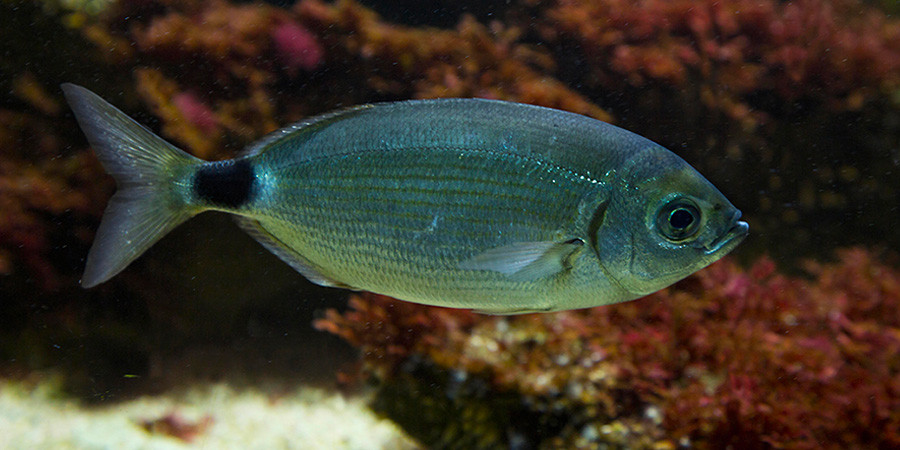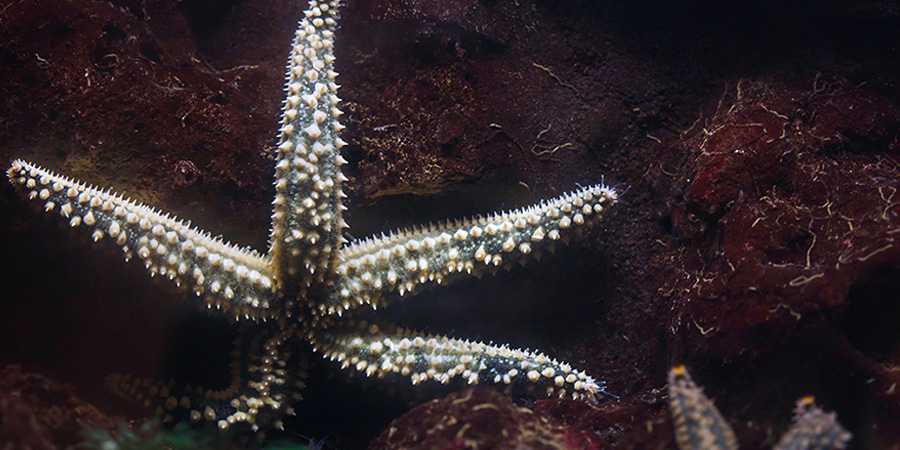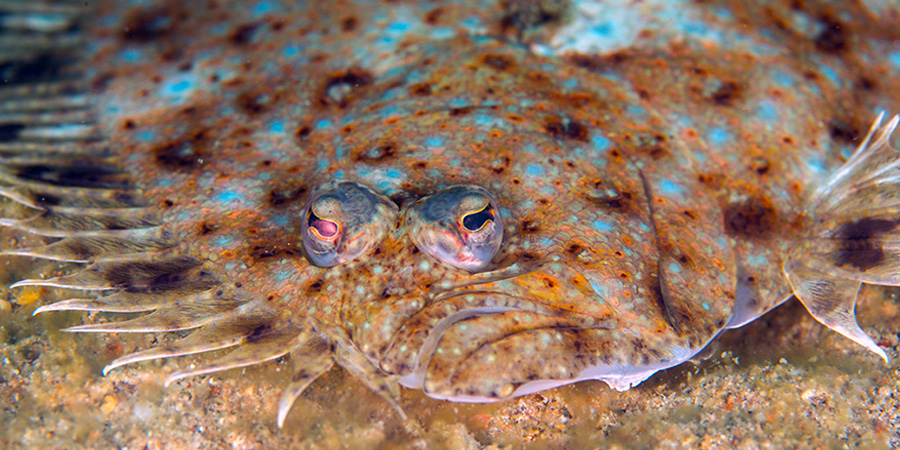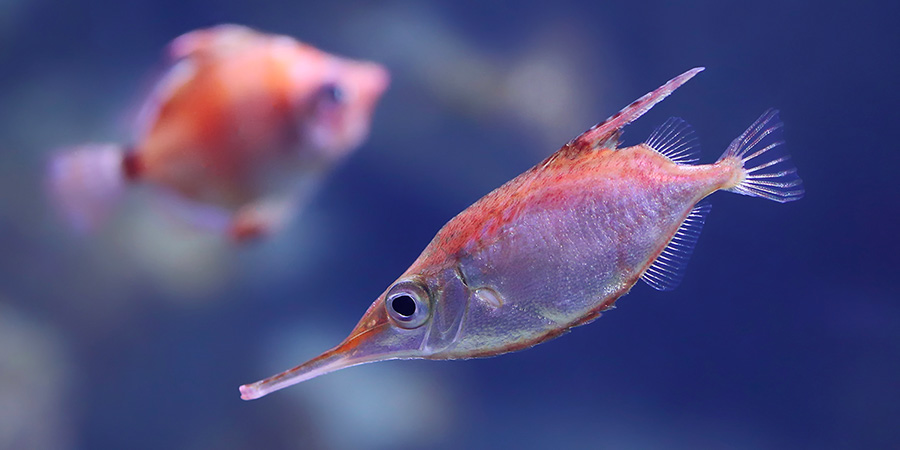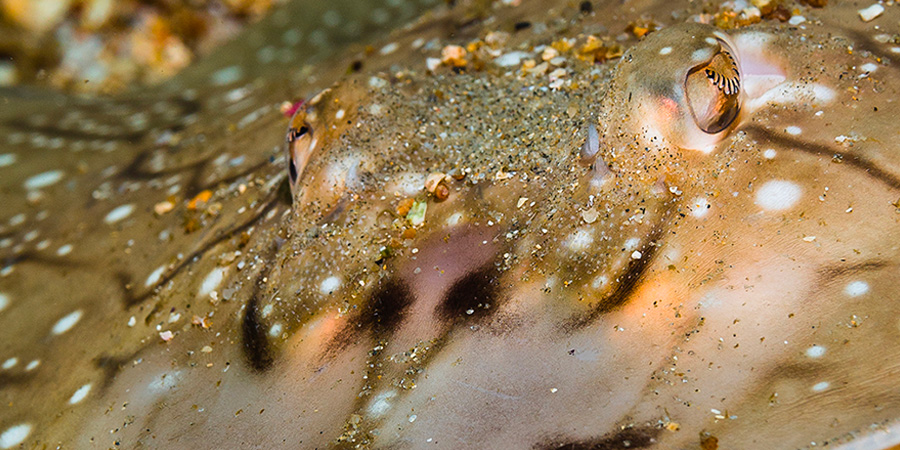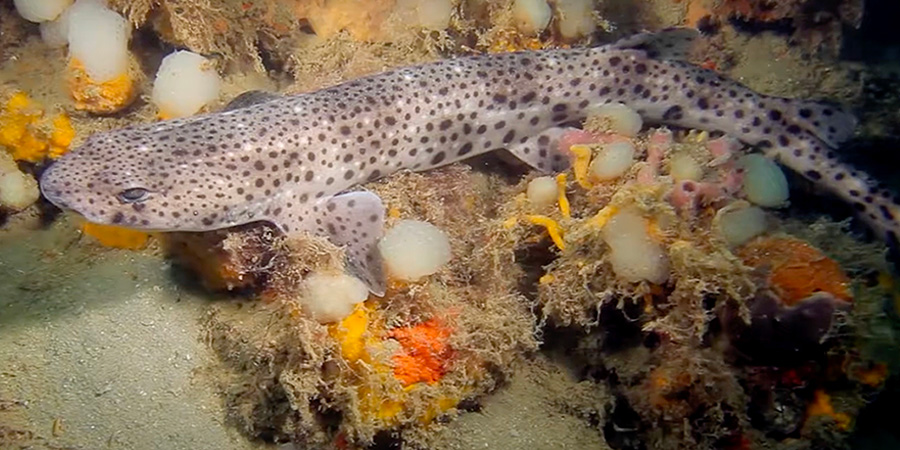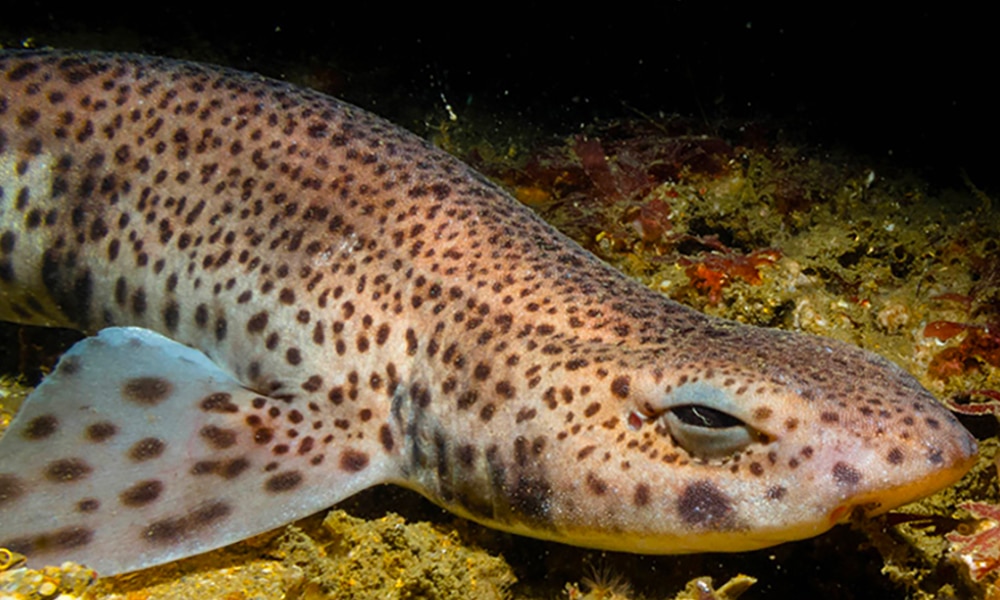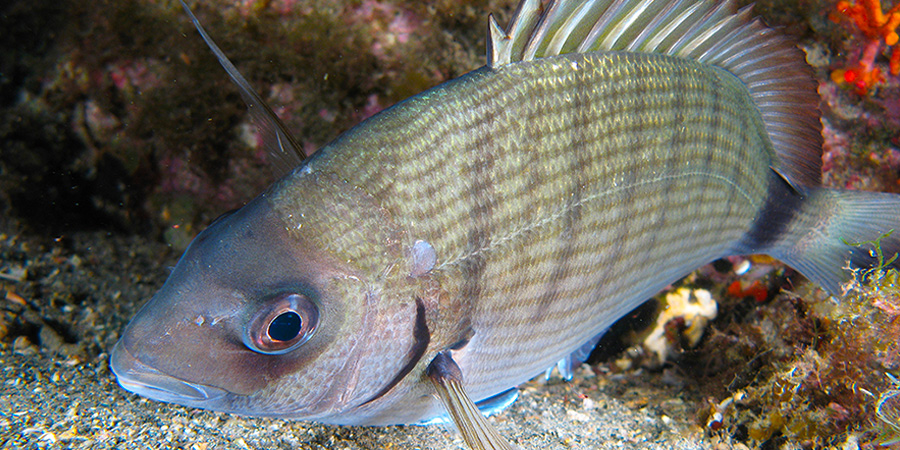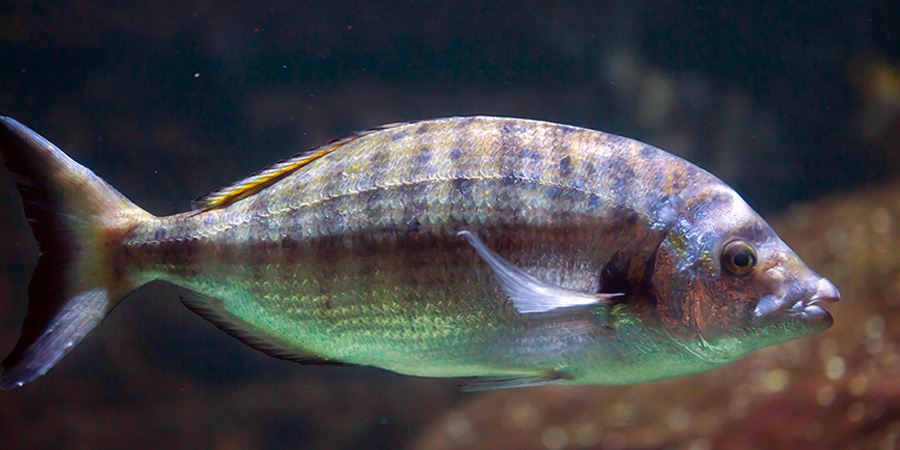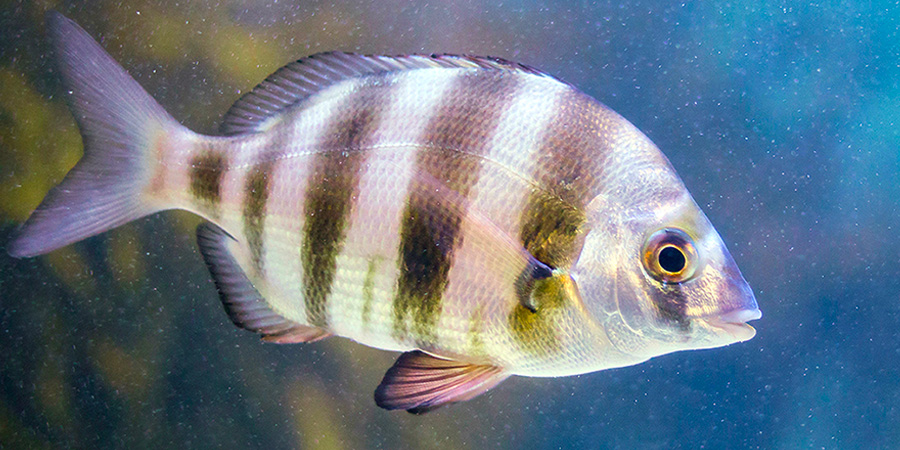
Scientific name : Diplodus cervinus
Family : Sparidae
Size : Up to 55 cm
Distribution : Mediterranean Sea and Eastern Atlantic : from the Bay of Biscay to South Africa
Biology : Its shape and coloration are less classical than those of other species, but its large black stripes make it highly recognizable.
This species prefers warmer seas, which is why it is found no farther north than the Bay of Biscay.
IUCN status : Least concern

